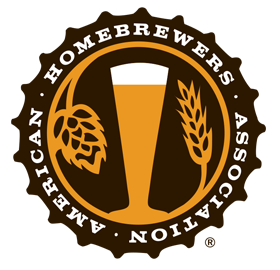
This homebrew recipe is featured in “Skeptical Brewing, Part 6” in the November/December 2022 Zymurgy magazine. This series takes a deep dive into commonly held brewing beliefs in pursuit of reaching a verdict on their plausibility.
“Bush telly” is Aussie slang for a campfire or for looking at the stars while sleeping in your swag (a kind of Australian bivvy bag). Featuring Aussie Galaxy and Eclipse hops, this modern take on the good, old thirst-quenching, highly drinkable Australian sparkling ale, very dry and highly carbonated, will have you looking at the stars. It will also allow you to test how pH can affect perceived bitterness, which is one of the reasons why the IBU scale is not helpful for gauging beer bitterness.
To test this impact, you just need to brew the recipe once and then do a triangle test between the original beer and the same beer with the addition of either phosphoric or lactic acid to reduce the pH by at least 0.2 points. To do this, we suggest serving two pitchers of the beer and adding the acid to one of them, drop by drop, until the pH drops, for example, from 4.3 to 4 or 4.1. Once achieved, do the triangle test to assess which beer feels more bitter. It’s the same base beer with the same IBUs and even the same IBU/OG ratio. The only change is the final pH.
If you can’t get your hands on Eclipse hops, Enigma is a good substitute from Australia. Or, stick with the celestial theme by substituting Ekuanot (formerly known as Equinox) or Comet. If Super Pride hops are hard to come by, try swapping in Centennial.
This homebrew recipe is featured in “Skeptical Brewing, Part 6” in the November/December 2022 Zymurgy magazine. This series takes a deep dive into commonly held brewing beliefs in pursuit of reaching a verdict on their plausibility.
“Bush telly” is Aussie slang for a campfire or for looking at the stars while sleeping in your swag (a kind of Australian bivvy bag). Featuring Aussie Galaxy and Eclipse hops, this modern take on the good, old thirst-quenching, highly drinkable Australian sparkling ale, very dry and highly carbonated, will have you looking at the stars. It will also allow you to test how pH can affect perceived bitterness, which is one of the reasons why the IBU scale is not helpful for gauging beer bitterness.
To test this impact, you just need to brew the recipe once and then do a triangle test between the original beer and the same beer with the addition of either phosphoric or lactic acid to reduce the pH by at least 0.2 points. To do this, we suggest serving two pitchers of the beer and adding the acid to one of them, drop by drop, until the pH drops, for example, from 4.3 to 4 or 4.1. Once achieved, do the triangle test to assess which beer feels more bitter. It’s the same base beer with the same IBUs and even the same IBU/OG ratio. The only change is the final pH.
If you can’t get your hands on Eclipse hops, Enigma is a good substitute from Australia. Or, stick with the celestial theme by substituting Ekuanot (formerly known as Equinox) or Comet. If Super Pride hops are hard to come by, try swapping in Centennial.
Ingredients:
- MALTS & ADJUNCTS
- 3 kg (6.6 lb.) pale malt (72% of grist)
- 650 g (1.4 lb.) white wheat malt (15% of grist)
- 300 g (10.6 oz.) Weyermann Carahell malt (7% of grist)
- 250 g (8.8 oz.) sucrose/table sugar @15 min (6% of grist)
- HOPS
- 4.5 g (0.16 oz.) Super Pride, 9% a.a. @ 60 min (5 IBU)
- 15 g (0.53 oz.) Galaxy, whirlpool @ 90°C (194°F)
- 15 g (0.53 oz.) Eclipse, whirlpool @ 90°C (194°F)
- 25 g (0.88 oz.) Galaxy, dry hop when SG < 1.015
- 25 g (0.88 oz.) Eclipse, dry hop when SG < 1.015
- WATER
- Ca ≥ 50 ppm, Mg ≤ 10 ppm, Na ≤ 10 ppm, SO4 ≈ 75 ppm, Cl ≈ 50 ppm, HCO3 ≤ 10 ppm
- YEAST
- White Labs WLP009 Australian Ale, Wyeast 1335 British Ale II Yeast; Omega British Ale VI (OYL-013) or British Ale I (OYL-006); Lallemand Nottingham; or Fermentis Safale S-04.
- Alternatively, if you can get hold of a Coopers Pale Ale or Coopers Sparkling Ale, propagate the dregs from the bottle.
- ADDITIONAL ITEMS
- 0.5 tablet Whirlfloc @ 10 min
- 1 tsp. (3 g) yeast nutrient @ 5 min
- 160 g (5.6 oz.) table sugar (sucrose), if naturally carbonating
Specifications:
Yield: 19 Liters (5 US gal.)
Original Gravity: 1.048 (11.9 P)
Final Gravity: 1.006 (1.5 P)
ABV: 5.5%
IBU: low/medium
SRM: 4
Directions:
Mash at 64°C (147°F) and adjust pH to 5.2–5.5. Rest for 60 minutes. If sparging, do so at 75–78°C (167–172°F). Collect enough wort in the kettle to yield 5 gallons (19 L) in the fermenter.
Boil the wort vigorously for 60 minutes, adding the hops, sucrose (table sugar), Whirlfloc, and yeast nutrient as indicated. After the 60-minute boil, lower the temperature to 90°C (194°F), add whirlpool hops, and let steep for 10 minutes before chilling the wort.
Chill wort to 19°C (66°F) and transfer to the fermenter. Aerate thoroughly and pitch the yeast. Increase fermentation temperature by 1°C (1.8°F) each day. Add dry hops per the indicated schedule.
After 3 days with no yeast activity (no gravity change), cold crash and chill the beer to as close to 0°C (32°F) as you can. Keep chilled for a week or two prior to bottling or kegging.
Australian sparkling ales are normally naturally carbonated (at higher than normal levels) with table sugar (sucrose), so if you are kegging, feel free to keg condition the beer to 3.4 vol. (6.8 g/L) CO2.





Share Post